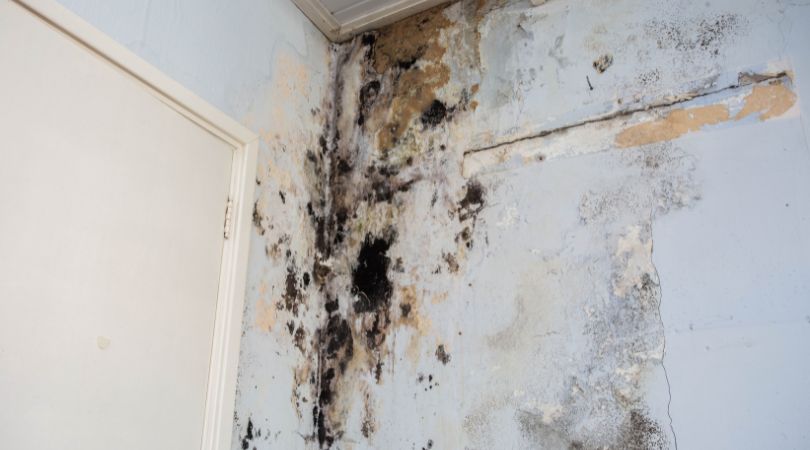Symptoms Of Mold Sickness
Are you concerned about potentially getting sick due to mold in your property? When mold grows in your home, it doesn’t only ruin your property’s aesthetic, but it also poses serious and detrimental health risks.
If you spot mold growing in your living space, the best thing to do is to stop it from spreading any further by quickly removing it. A quick removal will decrease the chances of the mold leading to medical symptoms.
In this article, we will discuss the symptoms of mold sickness, examine different types of molds and determine how to recognize them in your property.
What Is Mold?
Did you know that mold is a living organism? There are countless mold spores that fly around in the air at any given moment. However, actual growth begins when the spores successfully find a surface with favorable conditions, such as high-moisture locations. Mold colonies are unable to form in a dry environment, so homes with leaky pipes or inadequate ventilation are more likely to have mold issues.
Common Symptoms Of Mold Illness
There are many types of mold. Not all mold strains are considered health risks. Some are only aesthetically problematic. However, other molds could cause symptoms in susceptible individuals. Those with the highest risk of developing health issues are people with chronic immunodeficiency, allergies, or asthma. Common symptoms include:

- Coughing
- Red and/or itchy eyes
- Visible rash or general skin irritation
- Runny nose and/or sneezing
- Wheezing
- Headaches
- Tiredness and/or weakness
- Trouble focusing and/or brain fog
- Breathing difficulties
- Abdominal pain
- Nausea
Although these symptoms are most common in those vulnerable to mold growth, anyone can experience them.
Categories Of Molds
Based on their effects, molds are classified in the following three groups.
- Allergenic Molds: These molds are not so dangerous as they only cause problems for those with mold allergies and asthma. In general, it is more likely for children to have a mold allergy compared to adults.
- Pathogenic Molds: These molds are particularly dangerous for individuals with a repressed immune system as they can cause infection.
- Toxigenic Molds: Toxigenic molds can cause serious health effects as they produce mycotoxins, a toxic chemical. This toxin has been linked to immunosuppression and cancer.
Common Indoor Molds
There are many types of molds that grow in homes. Here are some of the most common ones:
- Cladosporium: Usually, this mold appears in a greenish-brown color, but it can also be black. This is one of the most common molds found in a home, but luckily it isn’t harmful.
- Penicillium: This dark green mold type tends to grow on the walls in large patches. Some types of penicillium can be toxic to humans and pets.
- Aspergillus: This is a greenish-white mold that isn't typically harmful to most people, so you shouldn’t be overly worried about it in your home. However, if your immune system is weak, it can cause your lungs or sinuses to develop infections.
- Alternaria: Often confused with “black mold,” this mold is normally a greenish-white color, but it can also appear black sometimes. If you have a mold allergy or asthma, Alternaria is likely to worsen your condition.
- Black Mold: This is one of the most dangerous types of mold. It typically appears in water-damaged homes on gypsum drywall.

If you see dark black patches of mold, you should be concerned as Black Mold produces mycotoxins. Mycotoxins can negatively impact the air quality in your home or cause serious infections.
How To Recognize Mold In Your Home
As you now know, it’s important to remove mold from your unit. But how can you notice it? The best and most effective approach is to hire a professional mold inspector. These qualified experts have the knowledge, experience and right tools for the job. You should contact a mold inspection if:
- You smell a musty odor.
- Your allergies or chronic health issues seem to inexplicably worsen.
- You see mold growth on any surfaces in your home, such as the windows.
It may also be helpful to identify your home’s risk factor for mold growth. Your property is high at risk if:
- It has recently flooded or experienced extensive water damage.
- It’s poorly ventilated.
- There have been active water leaks.
- Its indoor air is humid. This can often result in condensation on windows and glass doors.
Bottom Line
Mold in your home must be taken seriously. Not only do mold colonies look unappealing in a property, they can also pose severe health risks. Depending on the type of mold in your home, the severity of the symptoms will differ.
It’s best to ensure you’re safe by taking immediate action when you suspect mold growth in your home. Contact Markham Services for a professional mold inspector today. We are here for you!


